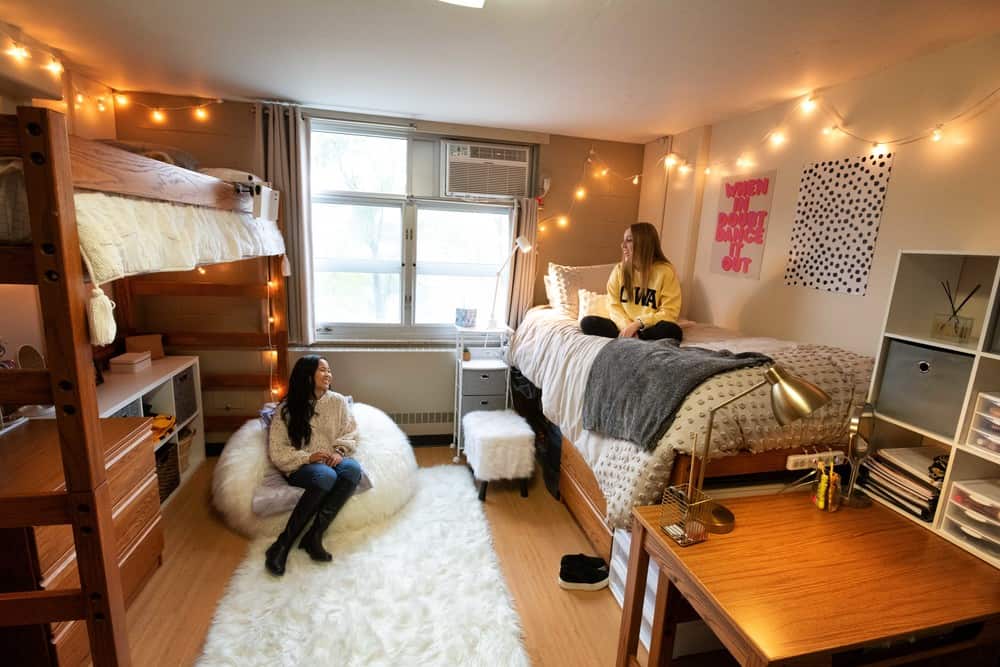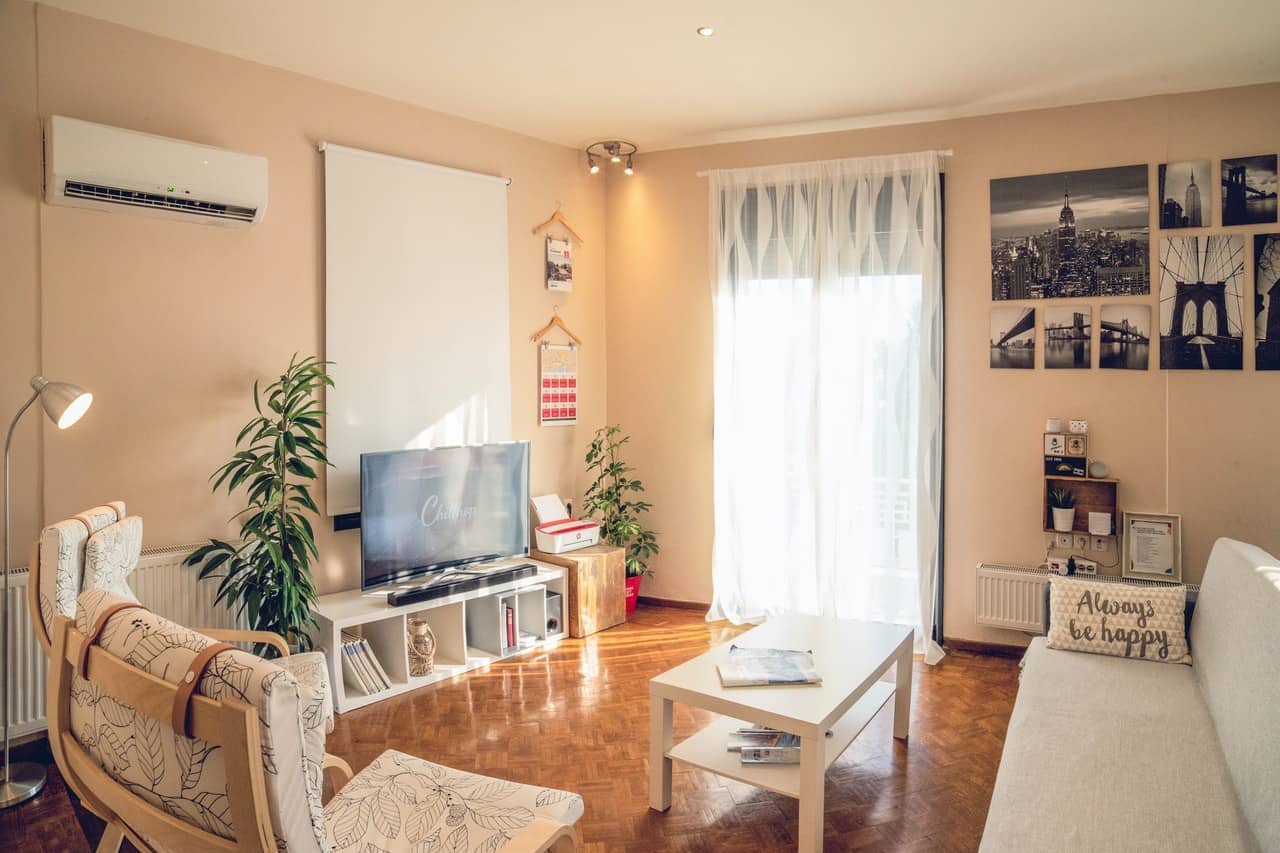You’ve accepted your offer letter: congratulations! Next, you’ll need to decide what your international student accommodations in Canada will look like. It can seem like a lot to navigate a new country, let alone find a place to live! Where do you begin?
To find your new home, you can connect with your academic institution for guidance or move forward independently. First, decide whether you want to live in an on-campus residence, off-campus housing, or with a host family. You’ve got lots of options—let’s explore some popular ones below.

Image Credit: University of Iowa
On-Campus Student Accommodations
Why live on campus? There are plenty of perks. You’re more likely to make new friends and get involved quickly because you’ll be around other students a lot. This can help make moving to Canada feel easier. Also, you’ll be near social events, food halls, study spaces, and your classes, so you’ll save money on transportation.
Many student residences have a don or residence advisor (RA), often an older student who can provide support, resolve conflicts, and help ensure safety. While rooms vary, the most common offerings are traditional dorm rooms and apartments or suites. Housing aims to welcome diverse students: many campuses offer separate housing for older students or students with families; some have accessible or barrier-free housing; others offer single-sex floors or buildings. Lastly, some accommodations include meal plans, so your room and meals are settled all in one contract.
Curious about what your first days in Canada might look like? Check out our arrival guide for international students!
Traditional Dorm
Dormitories (or “dorms”) are the most common residence option. Students may be assigned to a single dorm room with one bed, or a double dorm room with two beds.
Rooms are usually furnished with a bed frame, mattress, desk, chair, lamp, and closet space. Students must buy their own bedsheets and towels, and because those are bulky, we recommend buying them in Canada. Living facilities like kitchens, washrooms, and lounges are shared. It’s important to know how many students share each facility, as sharing a kitchen space with everyone on your floor is different from sharing it with everyone in your building! Also, some students may be comfortable with co-ed washrooms, whereas others may not be.
Your dorm room comes with the basics, but here are five quick ways you can make it feel like home.
Apartment or Suite
Suites and apartments offer more independence, and share similar social benefits as dorm rooms. Students may live with up to five other students in one apartment or suite, and may have their own bedroom or may share. Units include a kitchen, washroom, and living room. Similar to dorms, apartments and suites may have basic furniture, and standard appliances like a fridge and microwave. Suites may have in-suite or in-building laundry. Many also include basic utilities and internet access.

Image Credit: John Tekeridis on Pexels
Off-Campus Student Accommodations
Many students choose to live in off-campus rentals, especially after their first year. For international students, it’s a great way to meet others! Depending on the length of your stay, you can rent, sublet, or live with a host family.
Apartments or Shared Housing
Looking for a larger space? Many students rent a house, condo, or apartment with other students. Depending on your budget and desired living arrangements, it may work better to rent directly from a landlord or sublet.
To sublet means to take over another student’s lease, usually because they’re away for some time. The space is often fully furnished and utilities (internet, electricity, etc.) may be included. Sublets vary from a couple of months to a year. Find one through on-campus ads, searching on Google or Kijiji, or through your host school’s Facebook group.
As of June 2022, the average monthly rent for apartments across Canada was C$1,685. Renting a house averages C$2,893 per month, but remember if you plan to live with roommates, its cost per student can be lower than an apartment. Generally, renting is pricier in Ontario and British Columbia, and lower in Alberta, Manitoba, and Saskatchewan.
Protect your study abroad investment—avoid international student scams with these strategies.
Homestay
Living with a host family in a homestay means you’ll be immersed in Canadian culture, and enjoy meals with the family if you choose to. The family can also share local traditions and favorite spots to see, eat at, and explore. Plus, because many families speak English at home (or French in Quebec and New Brunswick!), you’ll improve your language skills.
Take a look at the checklist below for more general housing tips.

Accommodation Checklist
- What’s your rental budget? Be prepared to submit your first and last month’s rent before moving in.
- Remember to budget for utilities! Some off-campus rentals don’t include them, or only include basic utilities like power and water in rent. The yearly cost of utilities is between C$1,000 and C$1,350.
- Where do you want to live within the community? Close to school is ideal, so you can walk, versus relying on public transit or a car.
- Do you need roommates? Connect with other students on social media groups or through your host school. Rental companies can also match up students seeking roommates.
- Know the length and conditions of your rental contract or lease. Is it for one year? Six months? If you break a lease, you can be charged extra.
- Have someone you trust read your rental contract, too—if there’s something in it that doesn’t make sense, ask about it before you sign!
- Before signing any rental contract, visit the space or have a friend or family member visit it, to ensure it’s as advertised.
- Do you need to buy furniture? Find affordable options at second-hand stores, or on Facebook Marketplace or Kijiji.
Tuition and housing costs range across Canada. Check out our ApplyInsights article to gauge your student budget for each major city!
Still debating if you should live on-campus or off-campus? You can try both! Many students spend their first year in an on-campus residence (often a dorm), and then shift to apartment-style on- or off-campus. Watch our videos below for more ideas:
How to find student accommodations in Canada – Local housing company



